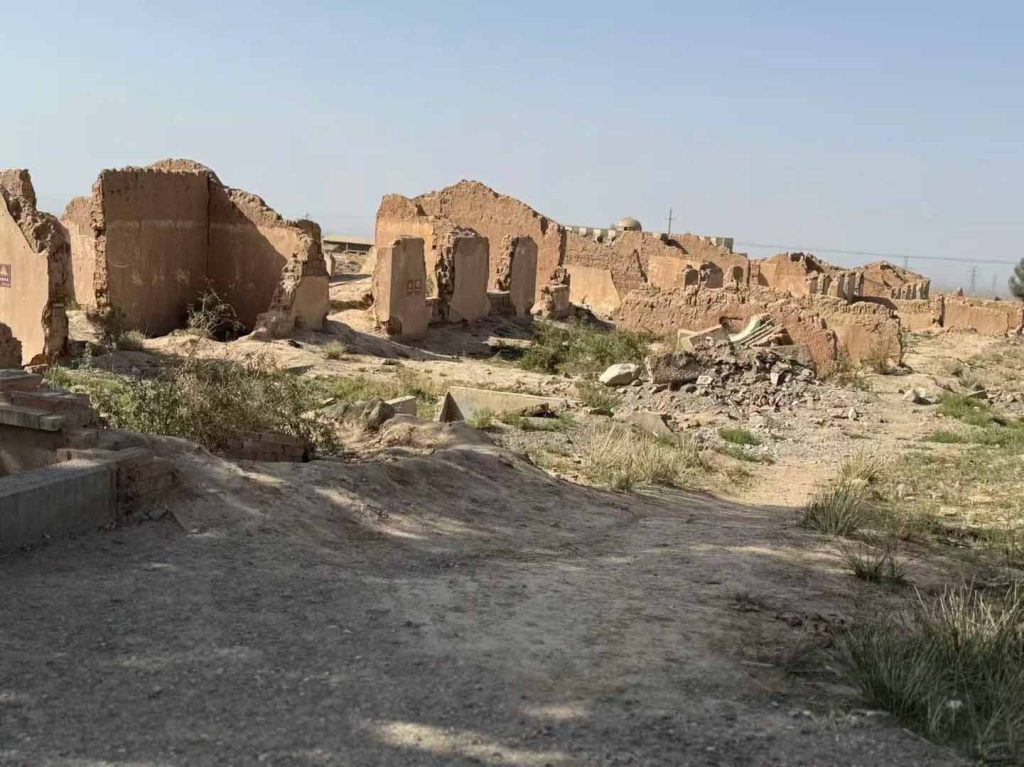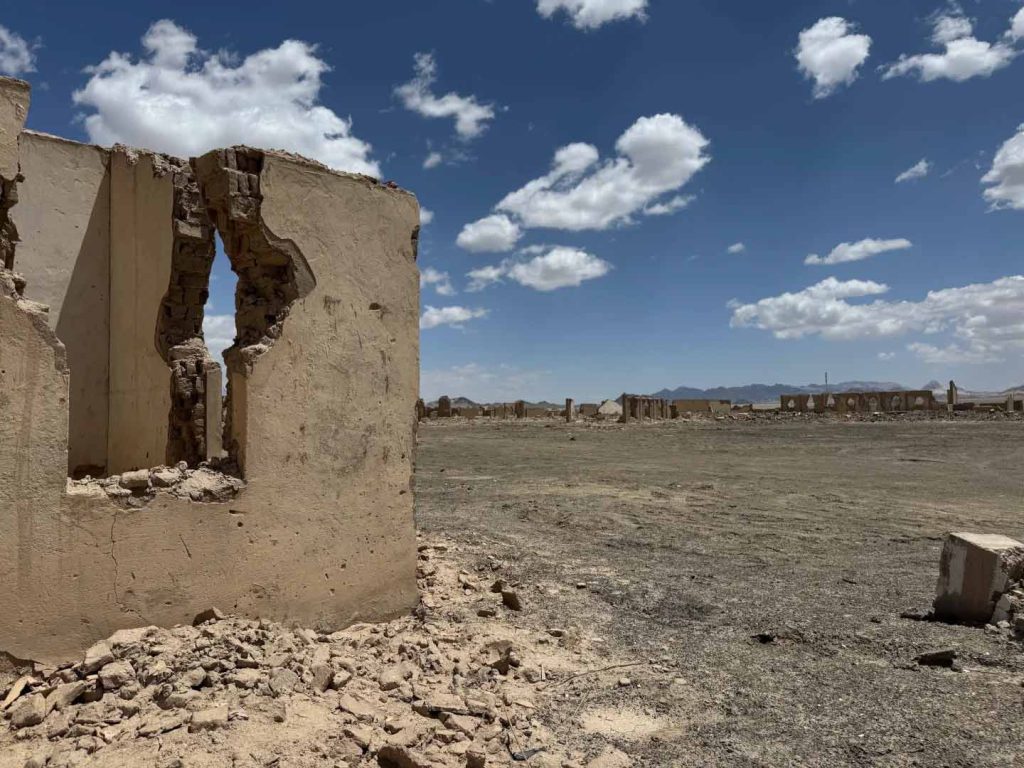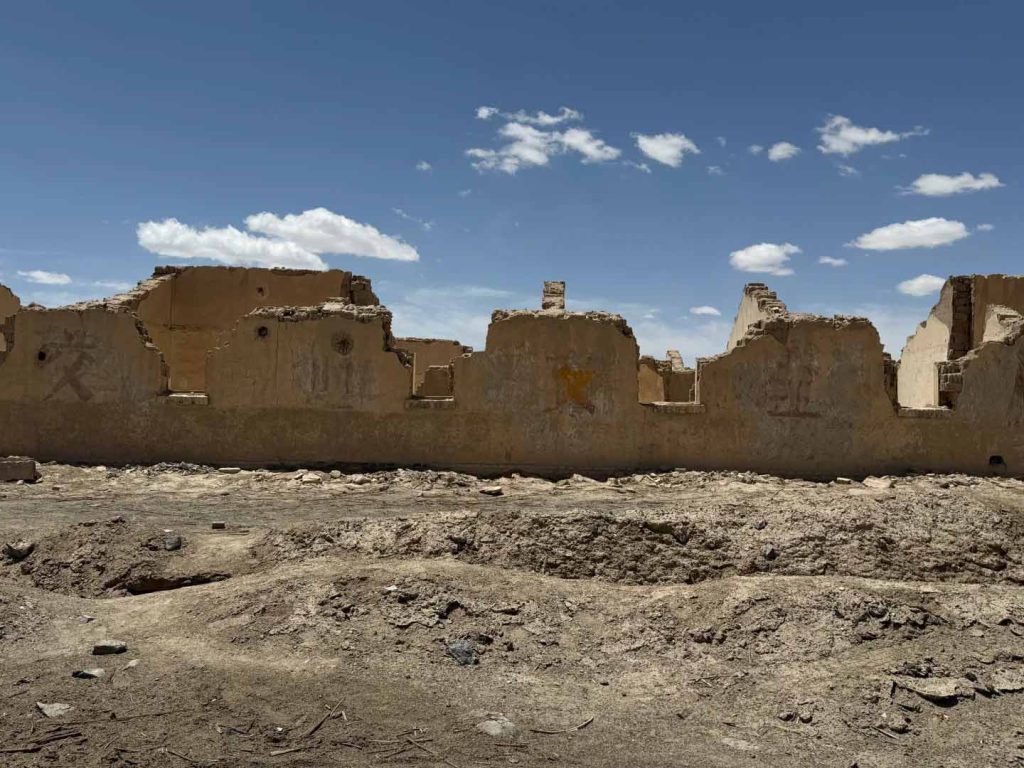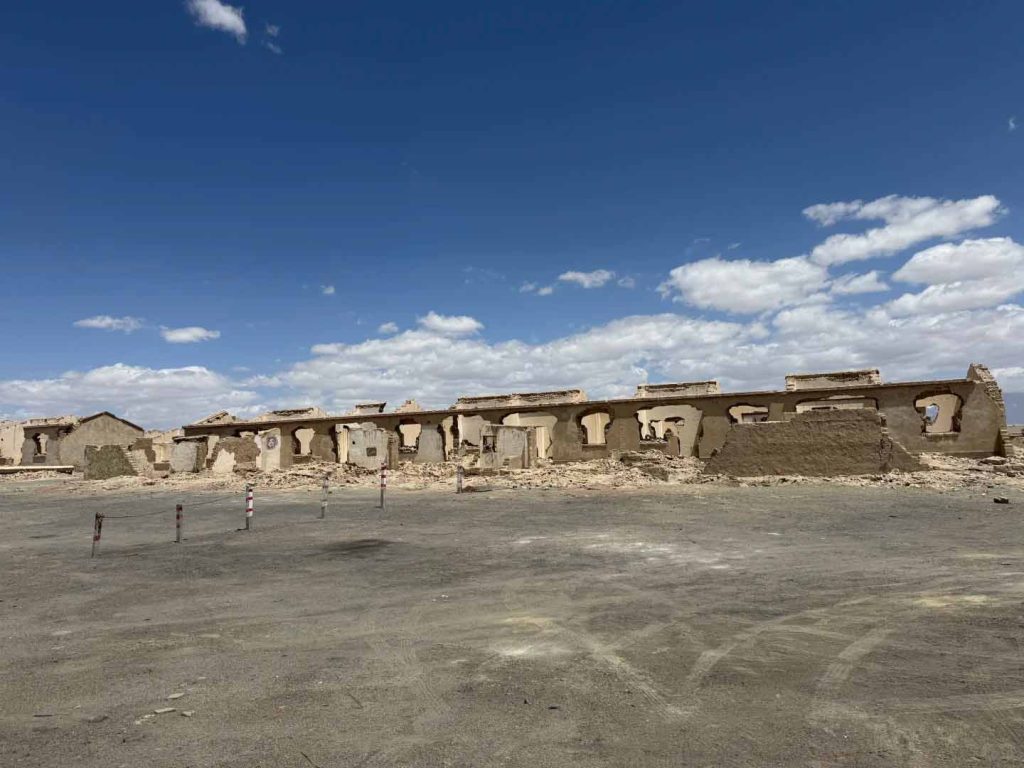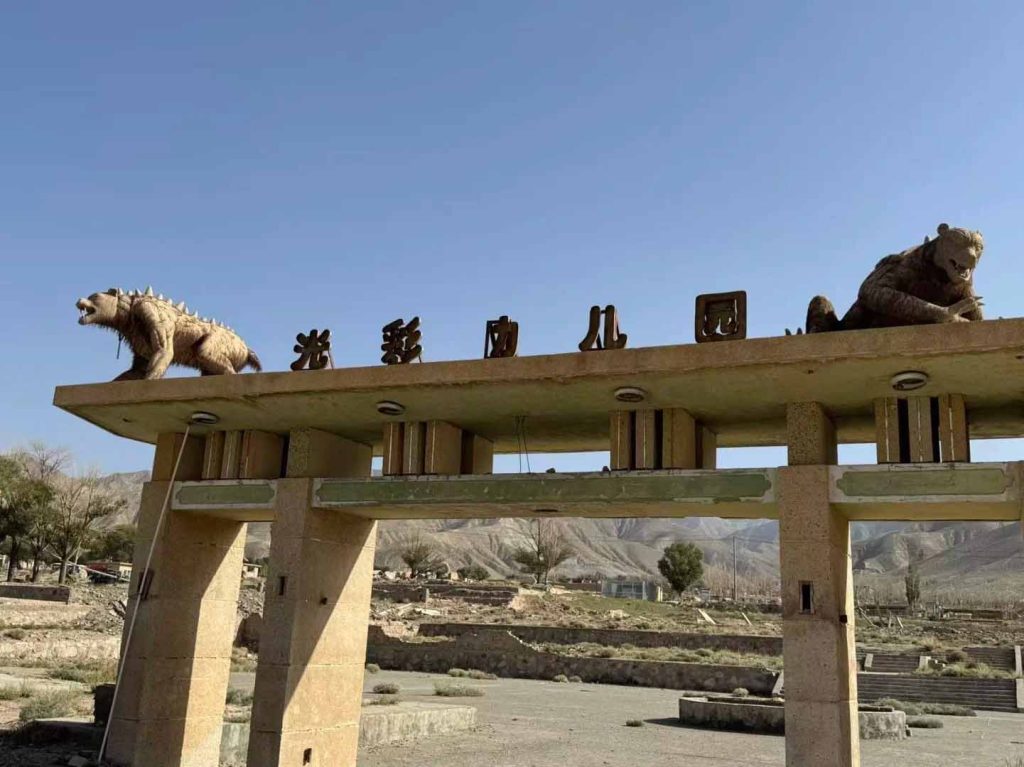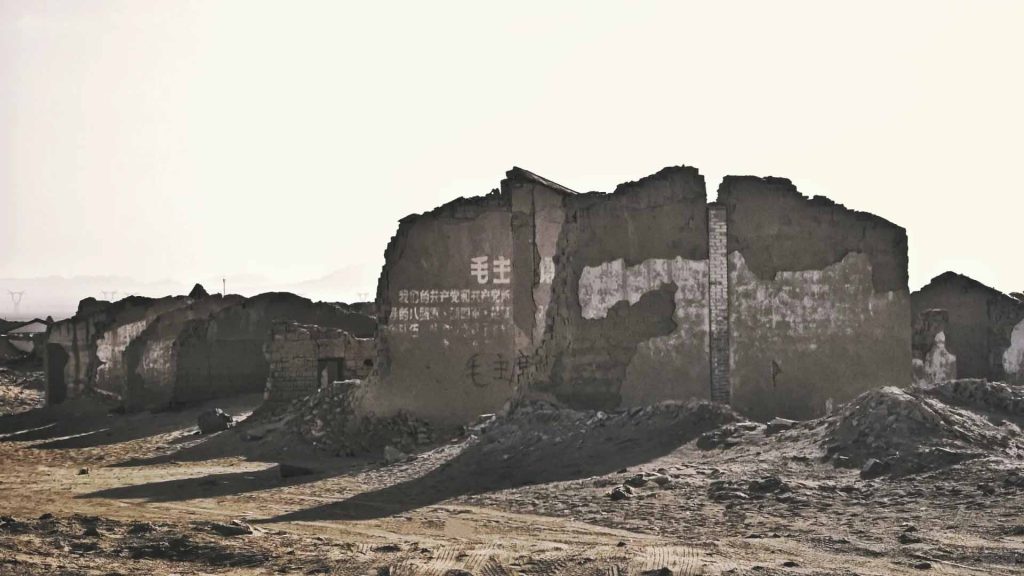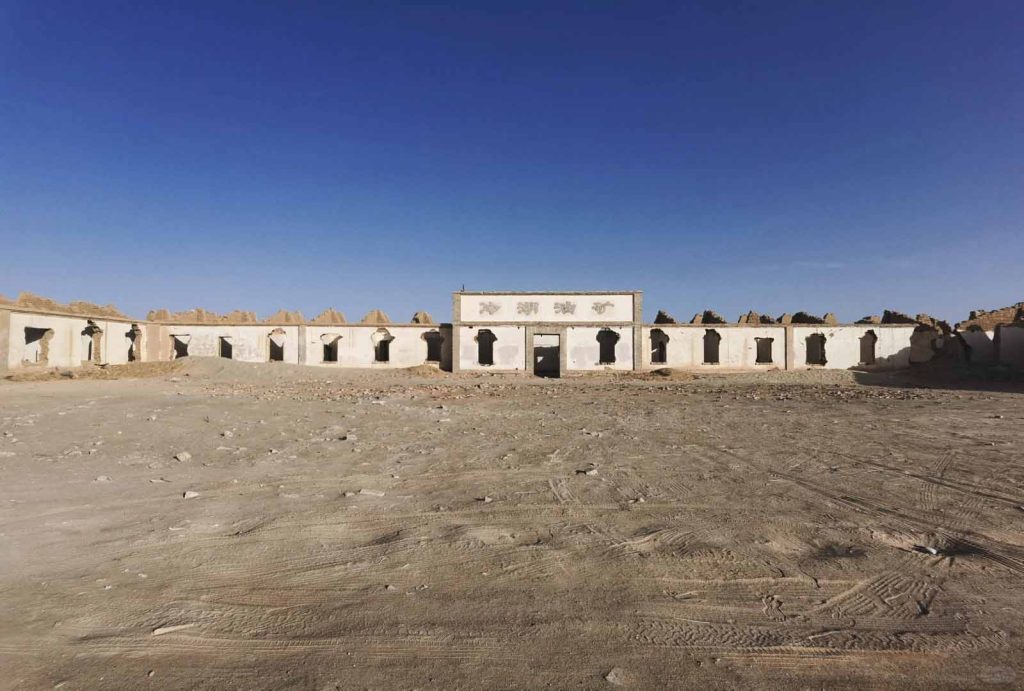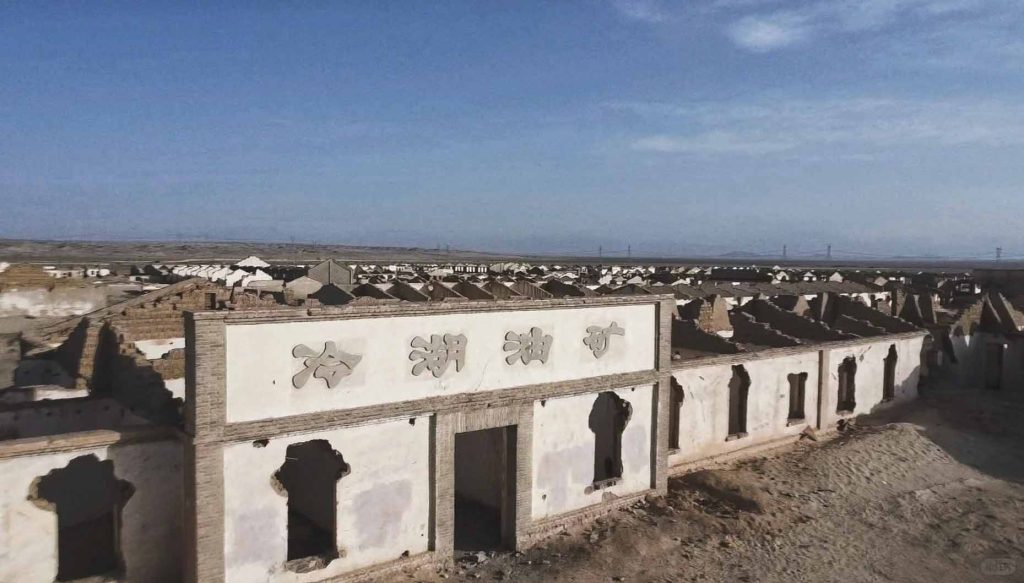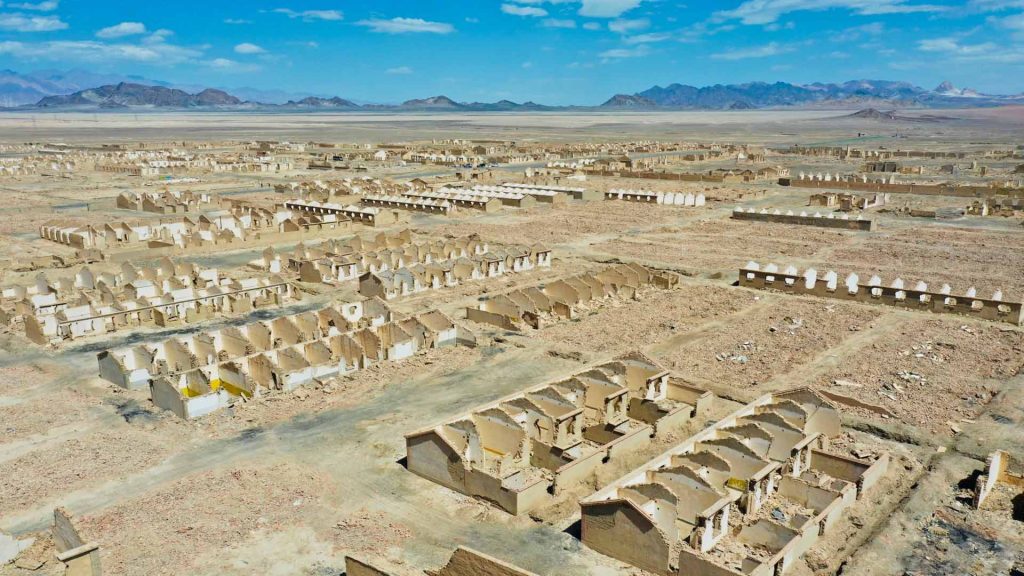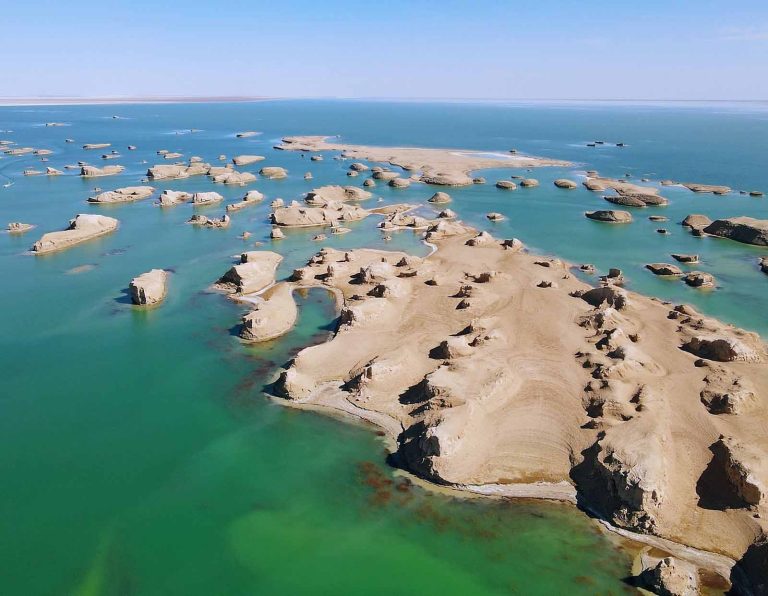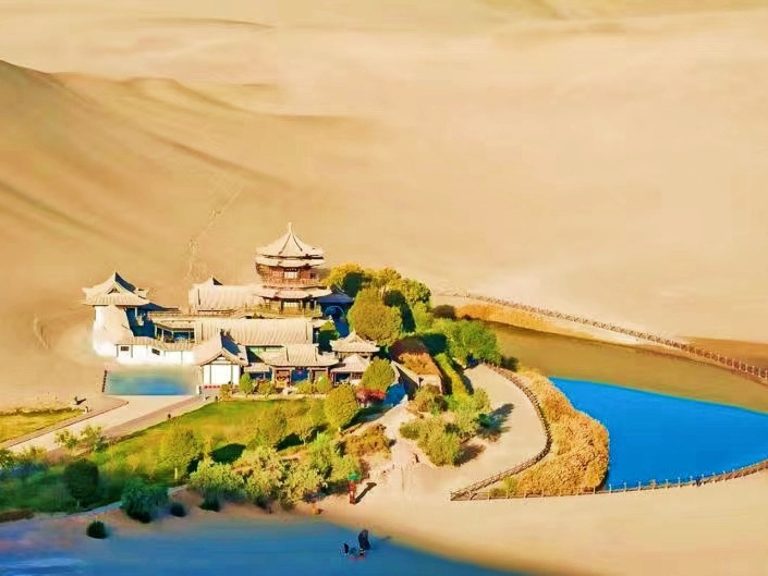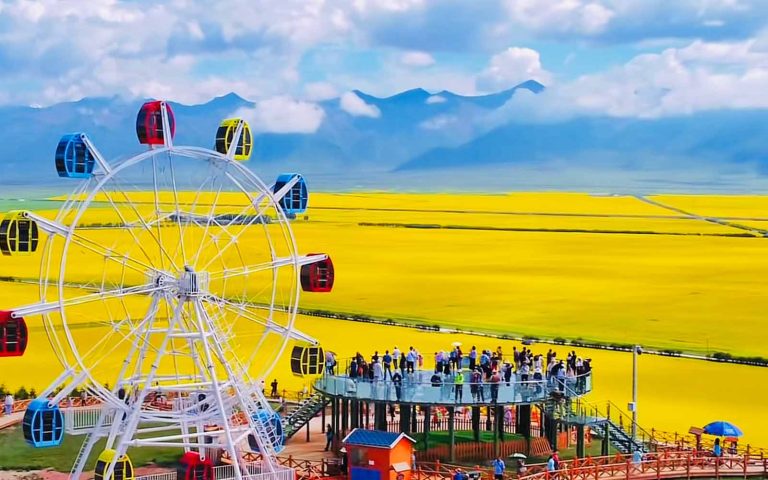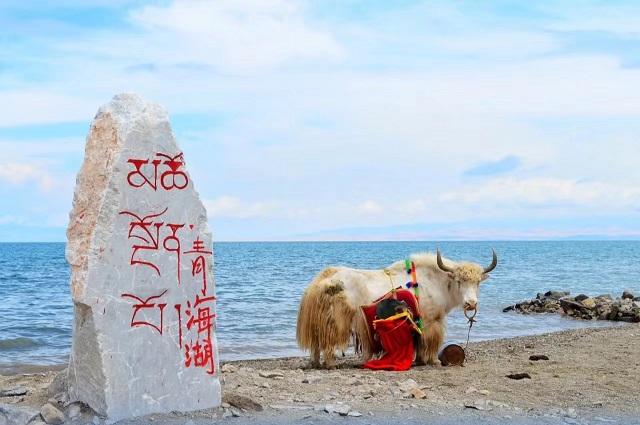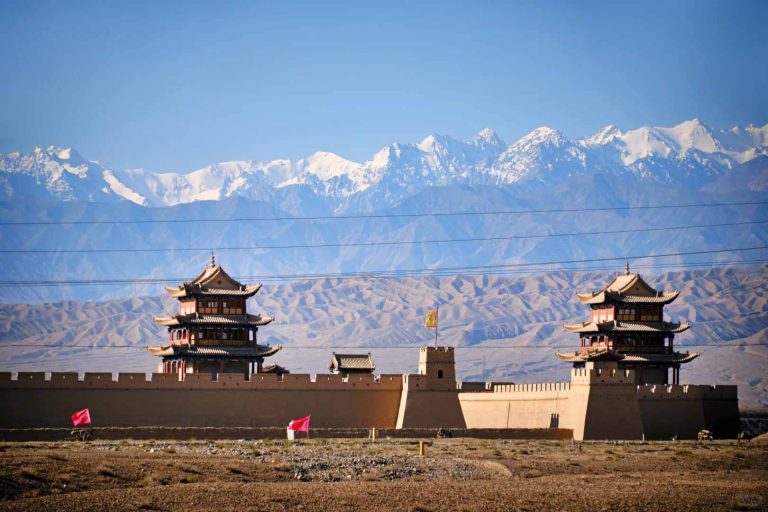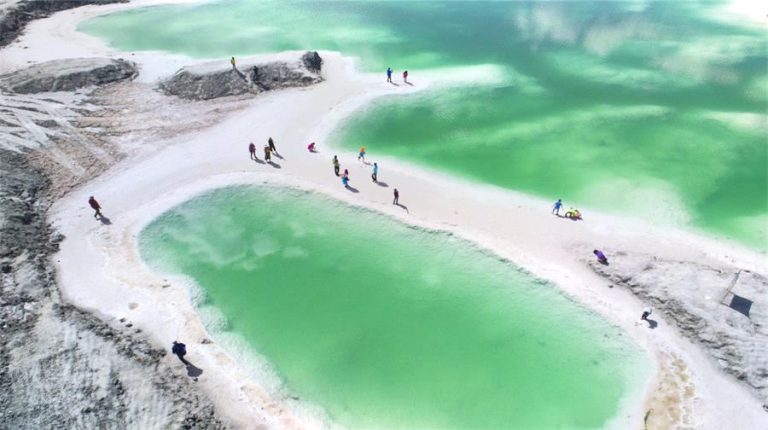address
Lenghu Administrative Committee of Haixi Mongolian and Tibetan Autonomous Prefecture, Qinghai Province S305
Opening hours
Open all day throughout the year
Amid the desert at the northwestern edge of the Qaidam Basin, a silent ruin stands quietly—the site of Lenghu Oil Town. Over half a century ago, tens of thousands of oil workers settled here with dreams, transforming the barren land of “Kuitunor” (Mongolian for “Cold Lake”) into a bustling industrial hub. Today, the crumbling walls still bear the imprint of an era defined by “hard work and selfless dedication.” Together with the nearby astronomical telescopes, they narrate the legendary transformation from “questioning the earth” to “gazing at the stars.” As a hidden gem along the Northwest Loop, blending historical depth with wilderness aesthetics, this site draws history seekers and stargazers alike to decipher the timeless secrets hidden deep within the Gobi Desert.
1. Core overview: from an important town of 10,000 people to the capital
The history of the rise and fall of Lenghu Petroleum town is the epitome of the development of China’s petroleum industry. In 1954, the geological team discovered an petroleum structure in this Gobi, which kicked off the development; in 1958, a strong blowout occurred in the “Hero Four Wells in the middle of the Earth”, which sprayed 800 tons of crude oil per day, instantly igniting a development boom. In 1959, Lenghu was officially established as a city, and the Qinghai Petroleum Administration moved here. Tens of thousands of people from all over the world gathered here. Schools, hospitals, shops and other facilities are readily available. At its peak, the population reached more than 30,000 people, becoming the “petroleum artery” that supports the industrial construction of New China.
However, with the gradual depletion of oil reserves, most of the oil fields were shut down in 1992, and the Petroleum Administration agency moved to Dunhuang, Gansu. The population plummeted to less than 2,000, and the once prosperous town was reduced to ruins. Today’s ruins are mainly composed of the old base 12 kilometers northeast of Lenghu Town and the No. 5 base 14 kilometers southeast. The criss-crossing streets are flooded with wasteland, and the walls of dilapidated houses still have slogans such as “Guarantee supply” and “Truth-seeking spirit”, and the yellowed fragments of awards tremble in the wind., Every broken brick and tile is a footnote to history. It is worth noting that this silent land has been reborn in recent years due to its unique dark night resources and has become the largest optical astronomical observation base in Asia, realizing a gorgeous turn from an “important oil town” to an “astronomical highland”.
2. Geographical location: the cultural coordinates of the Gobi Ring Road
The site of Lenghu Petroleum Town is located around Lenghu Town, Mengya City, Haixi City, Qinghai Province. It is located on the northwest edge of the Qaidam Basin. The core area is distributed in two locations.:
- The site of No. 5 Petroleum Base: It is located about 14 kilometers southeast of Lenghu Town. After driving southeast along National Highway 215, it can be reached by turning into Mars Highway No. 1. It is close to the site of “Four Wells in the Hero”.;
- The site of the old petroleum base: It is located about 12 kilometers northeast of Lenghu Town, close to the “U-shaped highway” section of the G315 national Highway.
Judging from the regional pattern, the ruins are at the key node of the northwest tourist loop of ‘Manya-Cold Lake-Dunhuang’: it is about 150 kilometers away from the city of Manya to the west, about 300 kilometers away from Dunhuang to the east, about 25 kilometers away from Heidushan to the south, and about 60 kilometers away from Oboliang Mars Camp to the north, forming a natural landscape with the surrounding area. The golden tour combination of ‘Humanities + Nature’.
3. Traffic guide: Self-driving-led wilderness search
The ruins of Lenghu Petroleum town are located in a remote Gobi region and are not covered by public transportation. Self-driving or chartered vehicles are the only feasible way to reach them. Route planning needs to take into account road conditions and supplies along the way.
(1) External arrival method
- Airplane + car rental / charter:
- The nearest airport is Manya Huatugou Airport (HUO), which is about 150 kilometers away from Lenghu Town. It has opened routes to Xining, Lanzhou, Dunhuang and other cities (the flight from Xining to Manya takes about 2 hours).
- Airport car rental: There are regular car rental spots at the exit, with an average of 400-600 yuan per day for 5-seater SUVs. Drive 150 kilometers eastward along the G315 national highway to Lenghu Town, and then go to various heritage areas; the chartered car includes a driver. The daily average is 800-1000 yuan, and the driver can explain the historical background and connect the surrounding attractions.
- Self-driving travel (recommended method):
- Recommended route:
- Dunhuang direction: Follow the G3011 Liuge Expressway to the west, turn to the G315 National Highway to the south, and arrive at Lenghu Town after passing through Axel Petroleum Town. The whole journey is about 300 kilometers and takes 5-6 hours. Priority can be given to visiting the ruins of the old base on the northeast side.;
- Xining direction: Follow the G6 Beijing-Tibet Expressway to the west, turn to the Dexiao Expressway and the G315 National Highway, and pass through Dachaidan Town to Lenghu Town. The whole journey is about 900 kilometers and takes 12-14 hours. It is recommended to stay and rest in Dachaidan halfway, and go to the ruins of Base No. 5 on the southeast side the next day.
- Vehicle requirements: Ordinary family cars can pass to the main heritage area. Because some branch lines are unpaved Gobi roads, it is recommended to choose SUVs with higher chassis; there are few gas stations along the way, and Lenghu Town is the core supply point, where it is necessary to fill up the amount of oil.
- Navigation tips: You can search for “Cold Lake No. 5 Petroleum Base” at the site of Base No. 5, and “Cold Lake Old Petroleum Base” at the site of the old base. The signal on the Gobi section is weak. You need to download the offline map in advance and follow the rut print.
- Charter / carpool:
- You can contact the charter service in Lenghu Town, Dachaidan Town or Manya Urban area. The round trip from Lenghu Town to the ruins of Base No. 5 is about 30 kilometers. The charter fee is 200-300 yuan /car (can seat 4 people), and the carpool is 50-80 yuan per person; Some local drivers are familiar with history and can provide free explanation services.
(2) Internal tour transportation
There are no internal transportation facilities in the ruins area, and the whole process needs to be explored on foot. The walking range of the core tourist area is about 2-3 kilometers. The ruins of Base No. 5 and the ruins of “Four Wells in the Land of Heroes” are about 1 kilometer apart. You can walk back and forth along the Gobi dirt road. The road conditions are gentle, but you need to pay attention to the gravel and potholes under your feet.
4. Tickets and open information: a free and open history class
(1) Ticket policy
All site areas are open for free(it costs about 30 yuan). There is no need to purchase tickets or make an appointment. Only transportation and personal supplies are required. There is a simple parking lot (free of charge) at the entrance of some ruins, and there are no toll checkpoints and ticket windows.
(2) Opening hours and best time
- Opening hours: Open all day, but it is recommended to visit during the day (8:00-19:00). There is no lighting and strong wind at night, which is a safety risk.
- Best time to visit:
- 10:00-12:00 am: Under the oblique sunlight, the shadows of the broken walls and ruins are clearly layered, suitable for taking historical documentary style photos;
- 16:00-18:00 pm: The light is soft, which can clearly capture the slogans on the walls and architectural details. The warm light before sunset adds a sense of vicissitudes to the ruins.
- Seasonal recommendations: Spring and autumn (April-May, September-October) are the best, with a temperature of 5-20℃ and less wind and sand; in summer, the temperature at noon can reach above 35℃, so you need to be prepared for heatstroke; in winter, the temperature is as low as -20℃, and it is prone to snowstorms. It is not recommended to go if it is not necessary.
5. Must-visit attractions and featured experiences
(1) Core landscape area
- Ruins of the Four Wells in the Hero’s Land:
- A meritorious landmark of China’s petroleum industry, an old-fashioned “kowtow machine” and a monument to “the four beauties of the heroic land are famous all over the world” stand quietly. In 1958, a strong blowout here kicked off the prelude to the development of the Cold Lake oilfield. The surrounding area is littered with the wreckage of drilling equipment, and traces of oil can still be seen on the ground. It is the core point for feeling the “spirit of petroleum”.
- Ruins of No. 5 Oil Base:
- The most well-preserved ruins area, with rows of dilapidated houses distributed along the streets, can identify the contours of shops, hospitals, schools and other buildings of the year. Although the slogans such as “Hard work and entrepreneurship” on the walls are blurred, you can still feel the passionate years; some houses still have relics such as tables, chairs, tools, etc., as if time has solidified in the moment of evacuation.
- Cold Lake Cemetery No. 4:
- Located in the southeast direction of Lenghu Town, there are more than 400 employees and their families who died of business or illness during the oilfield development period. The text on the tombstone records the lives of the devotees. It is an important place to remember the ancestors and appreciate the spirit of “patriotism, entrepreneurship, dedication and hard work”.
- Observation point of Astronomical observation base:
- Looking southwest from the ruins of Base No. 5, you can see the array of telescopes standing on Mount Seshteng. Among them, the “Mozi Sky Survey Telescope” is the equipment with the strongest optical time-domain sky survey capabilities in the northern hemisphere. Feel the changes of the times from “oil extraction” to “starry sky exploration”.
(2) Featured experience projects
- Photographic creation of industrial ruins:
- The strong contrast between the ruins and the Gobi is very effective. It is recommended to bring a wide-angle lens to take panoramic views of the ruins, and a telephoto lens to capture details such as slogans and relics. Choose dark or retro-style clothing to form a visual tension with the off-white ruins. The side light at sunrise and sunset can highlight the texture of the building.
- Petroleum History Studies:
- You can check the relevant materials of the “History of Cold Lake Petroleum Base” in advance, look for slogans of the times such as “guaranteed supply” and ‘scientific and Pragmatic’ in the ruins, and compare photos of the past and present to feel the changes; bring a notebook to record observation experience, suitable for parents and children or teams to carry out patriotic education.
- Starry sky observation linkage experience:
- Lenghu Lake is a protected area of dark night and starry sky, with a high-quality sunny night accounting for 70%. You can stay in Lenghu Town and go to the surrounding ruins at night (multiple people are required) to observe the Milky Way. The Milky Way arch bridge is clearly visible to the naked eye. Shooting with the silhouettes of the ruins is extremely beautiful (It is recommended to bring a tripod and a high-sensitivity camera).
6. Practical precautions: both safety and protection
- Site protection red line:
- It is strictly forbidden to paint, knock on walls or dismantle building components. The ruins and buildings are extremely fragile and may collapse due to touch.;
- It is not allowed to pick up relics (such as old tools, fragments of slogans, etc.) without authorization. These are all historical cultural relics and it is suspected of illegal to take them away without authorization.;
- Carry garbage bags with you, and all garbage must be taken out of the site. The Gobi ecology is fragile and there are no clean-up facilities. Littering will face a fine of more than 500 yuan.
- Safety and security instructions:
- Communication preparation: There is no mobile phone signal in the core area of the ruins. Be sure to inform relatives and friends of the itinerary before departure. It is recommended to bring a satellite phone or an emergency signal device.;
- Weather warning: The weather in Gobi is changeable. Check the weather forecast of Lenghu Town before departure. Cancel the trip immediately in case of sandstorms and strong winds.;
- Emergency supplies: Bring sufficient drinking water (at least 2 liters per person), high-calorie dry food (beef jerky, chocolate), sun protection products (sunscreen, sun hat, face mask) and first aid kit (including tourniquet, iodophor). Anti-heat medicine is required in summer, and a windproof jacket is added in spring and autumn.
- Outfit and equipment recommendations:
- Wear: long-sleeved quick-drying clothes, wear-resistant trousers (anti-gravel scratches), high-top hiking shoes (anti-sand shoes), it is recommended to wear windproof goggles to resist wind and sand;
- Equipment: The photographer is equipped with a camera dust cover, a portable folding stool for easy rest, and a magnifying glass for observing architectural details and oil traces.
- Surrounding supplies and accommodation:
- Supplies: There are no catering and drinking spots in the ruins. You need to purchase in Lenghu Town in advance (there are supermarkets and restaurants in the town). It is recommended to reserve food, mineral water and other durable storage materials.;
- Accommodation: There are no accommodation facilities around the ruins, so you need to return to Lenghu Town to check in. The budget hotel is 150-200 yuan per person /night. During the peak season (July-August), you need to book 3-5 days in advance.;
- Catering: Lenghu Town is dominated by Northwest flavor. Dishes such as hand-caught lamb and large-plate chicken can replenish physical strength, and the per capita consumption is 50-80 yuan.
- Other practical tips:
- Historical explanation: It is recommended to search for historical materials on Cold Lake petroleum development on the Internet in advance or watch the documentary ‘Cold Lake Memory’ to make the on-site experience more representative.;
- Route series: It is recommended to take a day trip of “Heidushan + Cold Lake Petroleum Site + Oboliang”. The three are relatively close to each other, which can save traffic time and form a characteristic itinerary of “natural wonders + industrial History + Martian Landform”.;
- Night protection: Stargazing at night must strictly abide by the ‘Regulations on the Environmental Protection of Cold Lake Astronomical Observations’ and do not use strong light flashlights to avoid affecting astronomical observations.

